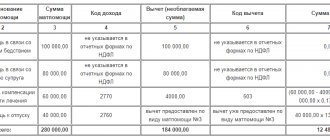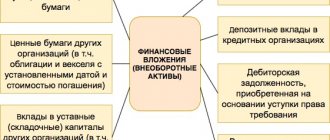When is a collective financial responsibility agreement needed?
In accordance with Article 244 of the Labor Code of the Russian Federation, an employer can enter into financial liability agreements with employees in cases where it is impossible to differentiate the responsibility of each employee for causing harm.
Agreements on full collective (team) financial responsibility can be concluded only with those employees who perform work included in the List of Positions and Works, approved by Resolution of the Ministry of Labor of Russia dated December 31, 2002 No. 85.
Such an agreement can be concluded, for example, with a team of warehouse workers, since they perform the work provided for in the specified List, namely: acceptance for storage, processing (manufacturing), storage, accounting, release (issuance) of material assets. However, remember that you cannot prepare a sample agreement on collective financial liability of the seller; in this case, you will need an agreement on individual financial liability.
Documenting
Employees can be involved in collective MO based on the manager’s order and agreement. Let's consider the correct execution of these documents.
Manager's order
The order must record this information:
- Company name.
- Grounds for KMO (Article 245 of the Labor Code).
- Instructions for the introduction of KMO (the instructions must be preceded by the word “I order”).
- Indication of the composition of the team (position, full name).
- Appointment of a team leader (his full name must be indicated).
- Sending instructions to the HR department about the need to conclude a CMO agreement.
- Sending instructions to the chief accountant regarding the development of Property Accounting Rules.
- Signature of the general director.
- Signature of employees confirming familiarization with the order.
Usually the manager also indicates that he reserves control over the execution of the order.
KMO Treaty
Sometimes an employer replaces a collective labor agreement with several individual responsibility agreements. This is not entirely legal. If collective responsibility is what is needed, an appropriate agreement must be drawn up. When drawing up an agreement, you need to remember these rules:
- The subject of the contract is property needed for professional activities.
- The agreement can only be concluded with employees over 18 years of age.
- The contract must contain a list of property for damage to which money will have to be paid.
- Cases are recorded in which the employee is released from liability.
- The procedure for determining the amount of damage and the procedure for challenging the manager’s decision in court are indicated.
Special cases of the onset of MO may be recorded. For example, disclosure of a trade secret, which resulted in damage. At the end of the document, the manager puts his signature. A CMO agreement can only be drawn up if the following circumstances exist:
- Availability of employment contracts with employees.
- Availability of job descriptions.
- Availability of a KMO order.
- There is a protocol of the meeting on the adoption of the collective MO.
IMPORTANT! If an individual contract on medical education has been concluded with an employee, the civil medical service does not apply to him.
Who can you enter into an agreement with?
Order of the USSR Ministry of Trade dated August 19, 1982 No. 169 approved “Instructions on the procedure for applying in state trade the legislation regulating the financial liability of workers and employees for damage caused to an enterprise, institution, or organization.” According to clause 3.7 of the Guidelines, agreements on full collective responsibility cannot be concluded with the following persons:
- employees of a small retail network (delivery and distribution trade, trade in tents, kiosks, etc., including those located separately in the sales area), as well as with other persons with whom an individual agreement on full responsibility has been concluded;
- persons hired on a part-time or part-time basis, if they, together with other employees, do not manage commodity assets (these persons can be sent to independent areas of work with full individual financial responsibility);
- workers of auxiliary professions (ironers, cutters, etc.);
- junior service personnel, loaders, auxiliary (transport) workers, watchmen;
- persons under 18 years of age;
- trainees of educational institutions, students studying directly at trade enterprises;
- graduates of higher and secondary specialized educational institutions and vocational education institutions who do not have experience working with material assets, as well as persons who have undergone industrial training during the first year of work. These employees are prohibited from entrusting independent work on servicing material assets outside the enterprise (delivery and distribution trade, trade in tents, stalls, etc.).
IMPORTANT!
The guidelines continue to apply to this day, but the order in which they will be applied has not been determined. In this regard, this document can be used as a recommendation, since the mandatory nature of its norms is not established by the Labor Code of the Russian Federation or other federal laws.
However, this regulatory act contains important clarifications that are not reflected in the current legislation. So, for example, according to clause 2.6 of the Instructions, the financial responsibility of the team for valuables located on the sales floor (in production) and in the utility room can be established if:
- the utility room is used by only one group of workers, all of them have free access to material assets located both in the sales area and in the utility room, and participate in all trade, warehouse and production operations;
- all commodity operations of production, auxiliary warehouse premises, commodity-money transactions of the trading floor constitute a single work process and are controlled by all its members.
The employer can use these provisions when organizing the safety of property entrusted to the team.
Categories of persons excluded from this form of liability
First of all, persons for whom it is unacceptable to file a penalty according to the law :
- minor citizens who cannot be hired for jobs that involve financial responsibility.
- Those who quit before the precedent of waste or damage to goods and other property, but were not deleted from the contract.
- Persons who were on sick leave, on vacation or otherwise absent from the workplace at the time of the loss.
- If the damage occurred as a result of reasons beyond the control of the team, including theft or robbery committed by third parties.
- In case of loss of property as a result of fire, flooding or other force majeure circumstances.
- If, through the fault of the employer, safety measures were not taken, which resulted in property damage.
Also, employees who are not members of the team who have signed an additional liability agreement to recovery for damage caused
These employees include junior service personnel .
Cleaners, plumbers, electricians and security guards have access to the territory on which the property is located, but are not included in the list of financially responsible persons .
Therefore, the team has the right to prevent them from entering the territory where valuable goods are stored without their own presence on site.
If employees included in the designated list of non-materially responsible persons caused property damage to the employer , then they may be charged with:
- limited financial liability if the guilty actions were committed unintentionally . Compensation for damage caused will not exceed one salary.
- Full financial liability if the offender was drunk or caused damage intentionally, or committed theft.
Important! Some dishonest acts committed with deliberately guilty intent may result in criminal liability.
Also, a collective penalty cannot be imposed on persons who have entered into an individual agreement with the employer on full financial responsibility. When issuing a penalty, only their personal involvement in the violation that resulted in damage is taken into account, within the framework established for their functional duties.
Moreover, such employees should not have access to the employer’s property transferred to the management of the team by official documents. And if such access is provided, then they bear individual responsibility within the framework of the competencies established for them.
How to conclude an agreement on collective liability
The employer's decision to establish full collective (team) financial liability is formalized by order or directive. Team members must be familiarized with the document and signed.
Since there is no unified form of the order, the employer has the right to develop it independently. The order (instruction) should reflect the following information:
- on the formation of a team (team);
- on the appointment of its leader;
- on concluding an agreement on full collective material liability.
Storekeeper's liability agreement: sample and contents
You can find an agreement on the material liability of a storekeeper here.
The content corresponds to Art. 244th TC:
- Place, date.
- Full name of manager warehouse
- Full name of the manager, name of the legal entity.
- Item.
- Term.
- Responsibilities: a) Head. warehouse; b) General Director.
- Rights: a) Manager warehouse; b) General Director.
- Responsibility; a) Manager warehouse; b) General Director.
- Procedure for collecting damages. a) By court; b) Company management.
- How the contract is extended and how it is terminated.
- Force Majeure.
- Other conditions.
- Signatures.
Work manager warehouse is associated with risk. Persons applying for this position must be aware of this risk and take all necessary precautions.
The procedure for collecting damages under a collective liability agreement
If damage is identified that is subject to compensation by the team, the employer is obliged to:
- Document the amount of damage.
- Request an explanation from all team members regarding the existence of damage.
- Establish a cause-and-effect relationship between damage and the performance/non-performance of job duties by employees.
Damage to be compensated by the team is distributed among team members in proportion to the monthly tariff rate (official salary) and the time actually worked for the period from the last inventory to the day the damage was discovered (clause 7.3 of the Instructions). Judicial practice recognizes this method of calculating damages as logical and lawful (clause 14 of the Resolution of the Plenum of the Supreme Court of the Russian Federation of November 16, 2006 No. 52, Determination of the Moscow City Court of June 29, 2010 in case No. 33-16601).
IMPORTANT!
It should be taken into account that, according to Part 4 of Art. 245 of the Labor Code of the Russian Federation, the degree of guilt of each team member is determined by agreement between all members of the team and the employer. Therefore, the employer must draw up an agreement with the employees, which will specify the amount of compensation for each of them.
The very amount of damage to be paid by a specific employee, in accordance with clause 7.3 of the Instructions, can be determined using the following formula:
Р1= С x З1/ (З1+ З2+…+ Зn),
Where:
- P1 - the amount of compensation for damage by the first member of the team;
- C - amount of damage;
- Z1, Z2, Z3, ... Zn - wages of team members for the inter-inventory period based on salaries taking into account the time worked.
When calculating the amount of damages, wages do not include bonuses received by team members, as well as severance pay, compensation and other payments, which, according to the law, are not subject to recovery.
Accordingly, after determining the amount of compensation for damage, a written agreement is drawn up on the amount and procedure for its repayment. The agreement is drawn up by all team members and signed by them and the employer.
If damage is recovered in court, the degree of guilt of each member (of the team) is determined by the court (Part 4 of Article 245 of the Labor Code of the Russian Federation).
Current legislation does not provide for joint liability of employees with whom an agreement on collective financial liability has been concluded in case of harm to the employer.








